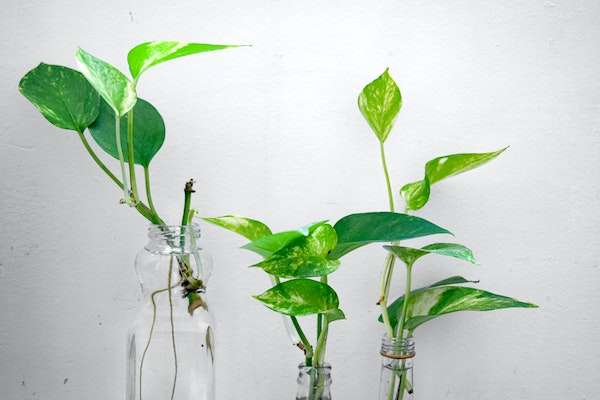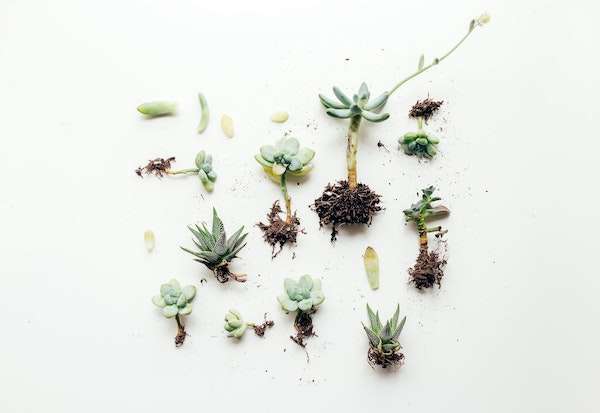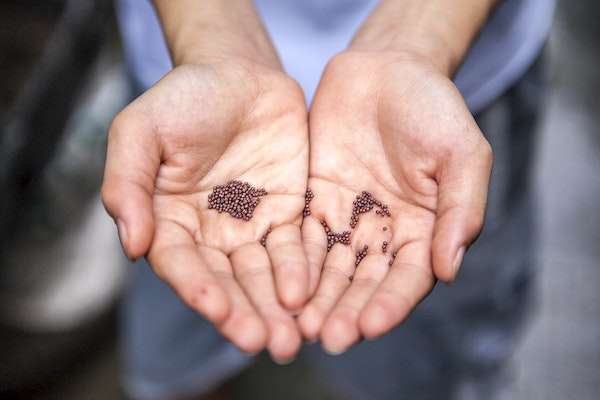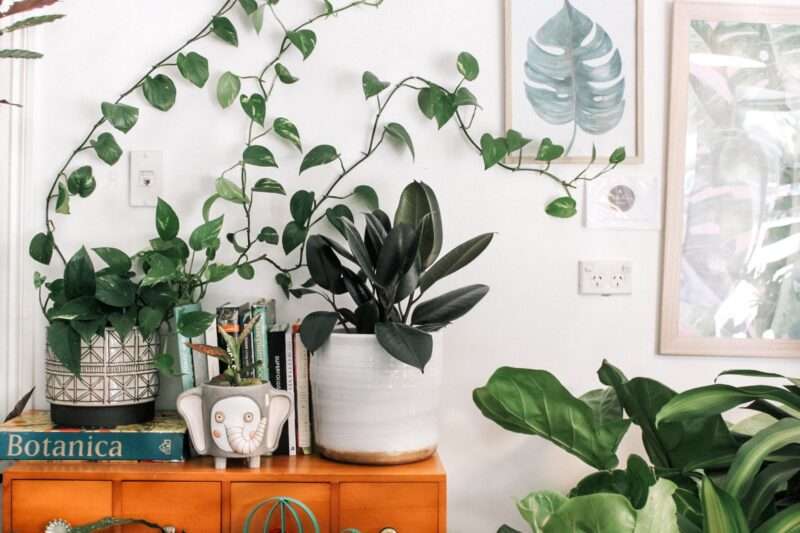Nearly everyone loves plants since they improve the aesthetics of our homes with no effort on our part aside from just some light and water. Another great thing about them is how simple they are to multiply through propagation, allowing you to add to your own collection or give some to others. There are many ways to propagate your houseplants, and in this guide, we will take a look at all you need to know about propagation. Let’s dive in!
Water propagation
If you’re new to propagating plants but still want to beautify your home with plants, you should begin with water rooting, the method most commonly used for houseplants. To get started, you’ll need a vine-like plant like a pothos, namely one with little nodes around the point where the leaf attaches to the stem. Choose a vigorous stem, trim it with sharp scissors just below a node, and immerse it in room-temperature water. The cutting or cuttings should be placed in a location that gets lots of light but not direct sunlight. Keep the water clean and check for new root development often. This is both easy and entertaining to do via glass jars. Transfer the plant to a container and fill it with potting mix when the roots are at least two inches long.
Pothos, philodendrons, inch plants, monsteras, and fiddle leaf figs are all excellent candidates for propagation in water.

Propagate your houseplants by rooting from a leaf
When rooting from a leaf, it’s important to make a clean cut from the parent plant. Let the leaf dry out so the wound scabs over. This will reduce the leaf’s water absorption when you water the plant. Sansevierias and other succulents, such as jade plants, are great at taking root from a leaf. It will take some experimentation, and no matter what you do, not every leaf will root.
Start by making a clean incision through the leaf of the plant. Do not overlook any steps in this procedure. Let the leaf out in the air for a few days so the wound may dry up and scab over. To increase the likelihood of successful propagation when cutting leaves from a sansevieria plant, a triangle should be sliced into the bottom of the leaf.
A rooting hormone should be applied to the leaf’s tip before planting at least two-thirds of the plant in new potting soil. Verify that the growing end of the leaf is pointed away from the dirt.
The next step is to wrap the stem in potting soil and push it lightly.
Stem cutting
As you would expect, this requires severing a section of your plant. But don’t worry, it won’t cause any harm! Leaves and stems can both be used to make cuttings. Plants like pothos, monstera, and philodendron, which have many leaves arranged along their long stems, benefit from this method. Here’s how to go about it:
- Step 1: Take off the stems
- Step 2: Remove a leaf from a stem
- Step 3: Drop the leaves into a container of sterile water. Leaves floating in water should be removed as soon as possible to prevent decay.
- Step 4: Keep the container near a window until you see roots forming.
- Step 5: Put the stems into the soil once the roots have formed.
Try the root division method to successfully propagate your houseplants
In the event that your plant outgrows its current pot, this is a fantastic opportunity to increase your collection. Certain plants, including aloes and pileas, produce little “pups” or offsets at the base that may be carefully plucked and replanted in the ground. However, you can successfully propagate your houseplants by dividing their roots.
First, remove the plant from its container, exposing the roots. If you’re having trouble pulling apart the roots by hand, use a sharp knife or shears to gently pluck and disentangle them into individual plants. Separate each plant into its own container and observe its progress as it matures.
Peace lilies, ZZ plants, pileas (Chinese money plant), and aloe are all excellent candidates for propagation by root division.
Propagation from offsets
Offsets, or lateral growth, is a characteristic of some plant species and often occurs towards the plant’s base.
This technique is difficult to master because it requires careful handling of the offset during removal to preserve as many newly produced roots as possible along with the bulk of the small plant. A “baby” with insufficient roots will not survive.
Cut it off with a sharp knife for more precision, then transplant it into regular potting soil just like you would an adult plant.
Only try this on an offset that is at least a few months old and has reached a substantial size. If your offset is still rather tiny, wait until it has grown a bit before doing this. Additionally, you shouldn’t expose it to changes in the environment. So, if you’re moving your houseplants to a new home soon, get your plants ready to go and shipped before trying to separate the offsets. Otherwise, you risk killing them.

The classic method: seeds
When attempting to get new home plants through propagation, seeds are typically the cheapest approach and provide the best value. However, only a small percentage of houseplants will yield seeds that may be used in this way.
There’s no getting around the fact that germination and subsequent growth to a respectable size both require a lot of time. It’s still possible to attempt growing new plants from seed, especially in a plant-loving household! Besides, you have nothing to lose if your home plant has given you any.
Be sure to use new compost and maintain ideal temps to speed up the seed-germinating process. Once the seeds have germinated, they need to be kept in a warm, humid environment with plenty of protection since their delicate size makes them easy to harm.

Start to propagate your houseplants!
Some efforts at propagation will fail, but you shouldn’t give up if the first one doesn’t work out. Stay persistent. There’s no better feeling than when you successfully propagate your houseplants! If you want to impress someone close to you, you can give them a plant you cultivated from seed to harvest! Good luck!
Author’s bio: Contributing author Kate Lee works as a writer and agent for apollomoving.ca. When she’s not working, she can be found in her garden caring for her plant babies or playing with her pooch, Scooter.
Photo Credits:
Featured Image
Cuttings in water
Baby offset plants
Seeds
